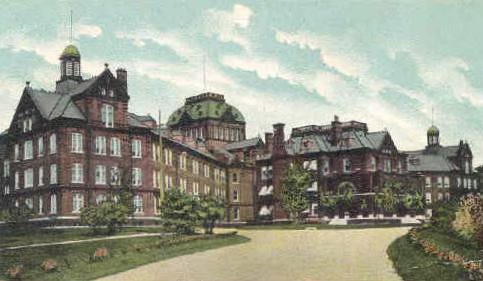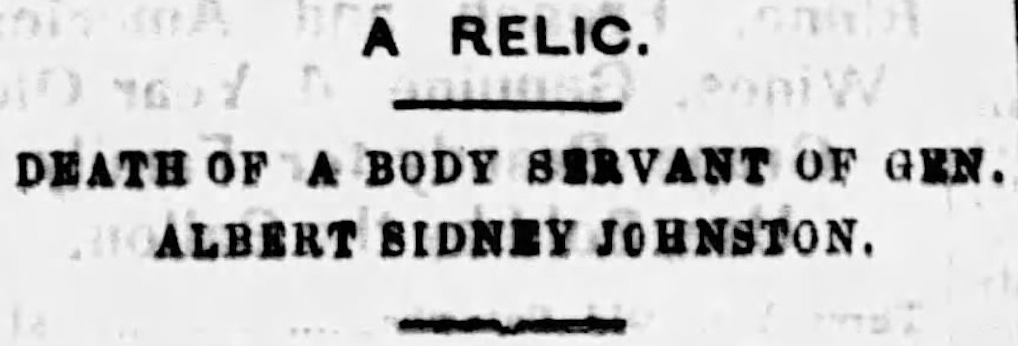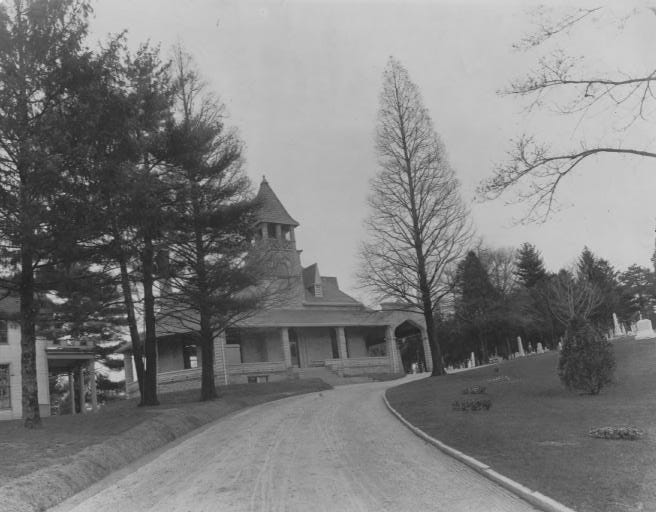In a previous post, I wrote about the Old Vanderburgh County Asylum in Evansville, Indiana. It was active from 1838 to 1883 and predates both the State Mental Health Hospital now at Vann and Lincoln Avenues as well as the previous Victorian hospital at the same location.
In sharp contrast to today’s HIPPA laws which protect our medical privacy, residents of the Asylum were afforded zero consideration. They were written about in ghoulish detail in the newspaper. One of these residents who, if his personal history as given is even partially true, deserves positive recognition for his life.
Gabriel Porter, most frequently called Gabe, was a black man who had endured slavery and servitude throughout his life. Without engaging in significantly more in-depth research, I was able to find only limited information about Gabe. For previously enslaved people, supporting documents are limited and difficult to find for verification of names, ages, locations, or anything else. Gabe was reported to have lived to be ninety-two years old, but reported ages are often exaggerated or simply incorrect. Based on what I could find, it’s more likely he was born around 1808 rather than 1787.
In 1879, reporters were planning an article about the Asylum. To gather information, they visited the facility for a tour. Having heard some of his background, they asked to meet Gabe Porter. The little knot of reporters were directed to Gabe’s bedside on one of the wards. He had drawn a mosquito net over himself to sleep. It was late May so the windows were probably open to air out the wards. Not responding to greetings, the netting was drawn back and Gabe Porter was found to be deceased.
The reporters remarked he had certainly died quietly since no one on the ward even noticed until he had already gone cold. This evokes another type of coldness: the chill of wondering how long it had been since anyone had checked on him. Especially since he had recently undergone amputation of an ulcerated leg which had caused him great pain.
The May 30, 1879 obituary from the Evansville Journal reported that “Old Uncle Gabe Porter” died following an amputation. Based on this statement, cause of death seems likely related to post-operative infection such as gangrene, probably in addition to a comorbidity such as diabetes or heart disease.
This obituary went on to say Gabe had been a ‘body servant’ of Confederate General Albert Sidney Johnston prior to and during the Mexican-American War. Gabe was said to have been present in 1837 when Republic of Texas President Sam Houston appointed Johnston, then a Colonel, as the Senior General over Felix Huston, who was a slave trader and first Brigadier General of the Army of the Republic of Texas. Felix was currently sulking in the military doghouse for demanding both San Antonio & the Alamo be burned down just in case it was difficult for his Army to defend them. Not the best display of military prowess, strategy, or confidence.
Gabe was said to also have been present during a lavish dinner at General Johnston’s house at which Felix Huston was a guest. Felix, nursing derrière-hurt feelings toward Johnston, challenged him to a duel in which three shots each were fired, the last one finding General Johnston’s hip. He lived through the injury but was killed on April 6, 1862 at the Battle of Shiloh in Tennessee.
Supposedly, General Johnston freed Gabe at the beginning of the Civil War. Gabe traveled to Henderson County, Kentucky where he married a woman who was currently a slave, thereby again entering into servitude to be with her. After the January 1, 1863 Emancipation Proclamation, the couple crossed the Ohio River to live in Evansville where Gabe worked odd jobs for businesses and individuals.
Gabriel Porter last appears on the city directory living in his own home in 1877. That he was experiencing difficult financial times is clear by his name appearing on a list of those who received “poor relief” in 1870-71.
By then, the Asylum doubled as the Poor House. It may be that as Gabriel Porter aged and could no longer do manual labor, he was sent to the Asylum for being unable to support himself rather than any mental condition and none was ever indicated. His age would have been at least 71, possibly older. At any rate, for that time he was an elderly man.
According to the staff and other residents, Gabe was very well-liked and described as a “good old man” who lived a long life that included some of the very worst conditions. While he sadly lived his last days in the Asylum, he appears to have been a much-loved resident and hopefully was treated as such.
Vanderburgh County Coroner Frederick W. Wastjer read in the newspaper about the consecutive deaths in May of Peter Buzzard (previous post) and Gabe Porter. He was dismayed to learn the Asylum physician, Dr. William S. Pollard had signed their death certificates. In a rage, he was reported to have “skipped off on his ear” to the Asylum to complain that the bodies were not brought to him. The article indicates this was because Coroner Wastjer receives a fee for each death certificate he produced and felt “gerrymandered” out of this income.
I write about some of these residents to reveal them not as they were written about in the papers, but as people with lives that were often inordinately difficult, plagued with struggles and/or illness, and to bring them forward in time with understanding and compassion.






